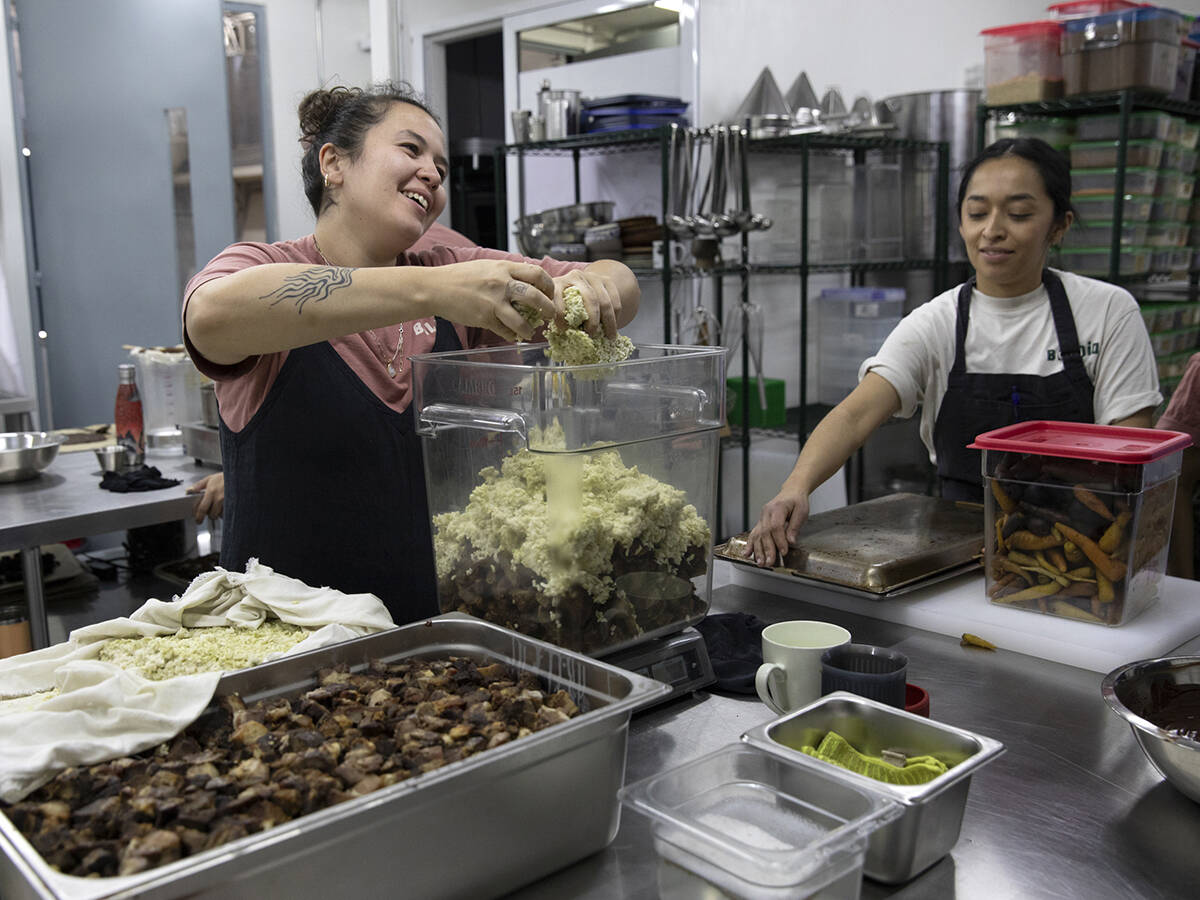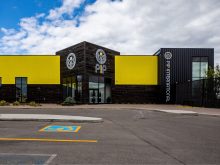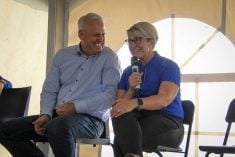An understanding of entrepreneurship is needed in our market-driven
economy because most new businesses are small ones employing fewer than
10 people. Many schools have recognized that young people need business
skills. This has led to the development of entrepreneurship classes.
During the holidays I had a chance to learn about my niece’s
entrepreneur class experience.
Jenny Pearson, a Grade 8 student at Sister O’Brien School in Saskatoon,
took entrepreneurship in her social studies class this past fall. In
Read Also

Restaurant blends zero waste, ancient farming
A Mexico City restaurant has become a draw for its zero-waste kitchen, which means that every scrap of food and leftovers is reused for other purposes.
this unit the students, individually or as a group, had to research,
design, manufacture and market a product.
They developed a business proposal that was presented to their class,
which included their product, budget and market research.
Market surveys were done by going to three different classes to gather
information about student preferences for products and what price they
would pay for the product. Jenny developed a 2001 A Chocolate Odyssey
dessert based on one of her favorites, a Dairy Queen Brownie
Earthquake. Her version was smaller and less expensive.
She started with a basic brownie recipe, using mini muffin tins to make
bite-sized brownies. Through her testing she discovered that she needed
to add an extra egg to keep the mini muffins from being too dry.
Chocolate odyssey muffin
1 cup sugar 250 mL
1/2 cup slightly melted 125 mL
margarine
3 eggs
1/4 cup cocoa 50 mL
3/4 cup flour 175 mL
1/2 teaspoon salt 2 mL
1/2 teaspoon vanilla 2 mL
Mix all the ingredients and then fill a 24 mini muffin pan. Bake for 12
minutes at 350 F (180 C).
To assemble the dessert, she placed a mini brownie in a clear plastic
cup and added a scoop of vanilla ice cream, a teaspoon of crushed
chocolate cookie bits, a scoop of whipped cream and topped it with
chocolate sauce. To decorate, she added a Swedish berry candy like a
ju-jube.
The day of the sale, Jenny hired two students to help her for about
half an hour in assembling the desserts. She paid them by giving them a
free dessert.
Her costs were about 50 cents per dessert and she sold them for $1
each. Several students purchased more than one and one bought five. Her
plan was to sell 80 and she sold 83. The student entrepreneurs were
required to give 10 percent of their profits back to the school
classroom fund, a form of taxation. When she included shopping, baking
and assembly time, she made about $11.26 an hour.
In the entrepreneur unit the students also learned what makes a good
employee, what you have to do to make a product, and advertising and
marketing techniques.
Jenny learned how colour affects people. For example, orange and red
are attention-getting, high-energy colors and are often used to promote
food. The students who manufactured pillows found in their student
surveys that the pillow colour preferences were blue and green.
In designing posters, the one-third two-third rule was explained to
them. Generally people will look at one-third of the poster for three
seconds. If this attracts their attention they may take the time to
look at the other two-thirds of the poster. Jenny gave her poster a red
and orange background and made sure the price and product lettering
stood out.
The products were sold at a two-day sale just before Christmas in the
K-8 school hallways. About 370 students, parents and teachers were the
customers.
On the first day of the sale about $800 worth of products were sold,
ranging in price from 50 cents to $7. Some of the other products her
classmates developed were belts, duct tape wallets, fleece toques,
large and small fleece pillows, stencilled Christmas wrapping paper,
toothbrush bracelets, polar fleece scarves, knitting machine, made
mitts and locker mirrors.
In analyzing the product sales, the students realized that the mitts
were priced too high at $7 a pair for the elementary school market, the
locker mirrors at $6.50 would have sold better at the high school and
the fringed scarves sold well because they were marketed as a status
symbol.
A grand idea
Entrepreneurship skills are also needed by community groups and
non-profit organizations to meet their budgets.
In November 2000, the Rosetown and District Music Festival Association
initiated a “buy a piece of the grand” fund-raising promotion to buy a
grand piano. In less than a year it raised $22,000 and purchased the
piano.
The promotion focused on selling different pieces of the piano. For
example, white keys were $50, black keys were $25, the pedals were
$200, the bench was $400. A plaque was placed near the piano listing
donations over $200.
A memory book was published listing all of the piano parts, the donors
and the reason for the donation. Tax receipts were issued for all
donations.
A professional black and white pamphlet was designed and mailed to all
residents, community groups and businesses in the area as well as 1,200
former residents. The response was tremendous.
All donations for the piano were used for the piano purchase or the
piano maintenance fund. To cover the promotional expenses, three
fund-raising concerts were held.
A church in Weyburn has since had the pamphlet reprinted to raise money
for a piano. For more information on the promotion, contact Betty Ann
or Danny at Rosetown Publishing, Rosetown, Sask., 306-882-4202.
The good old days
Do any of these sound familiar? A friend shared this with me because it
ended with a “double dog dare” to pass it on. If you remember what that
means, you understand. How many of these things do you remember?
Candy cigarettes, wax coke-shaped bottles filled with coloured sugar
water, soda pop machines that dispensed glass bottles, coffee shops
with tableside juke boxes, Blackjack, Clove and Teaberry chewing gum,
home milk delivery in glass bottles with cardboard stoppers, party
lines, newsreels before the movie, P. F. Flyers, butch wax, pea
shooters, Howdy Doody, 45 rpm records, green stamps, blue flash bulbs,
Beanie and Cecil, roller skate keys, cork pop guns, wash- tub wringers,
Tinker toys, Erector Set, Fort Apache Play set, five-cent packs of
baseball cards with that awful pink slab of bubble gum and penny candy.
















